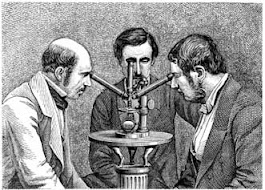A brief history of science
Early scientific ideas:
Before 1609, science was mainly based on ideas proposed by the Greek philosopher Aristotle. By 340 BC, he recorded his ideas about the universe, matter, and living organisms. In his book “on the heavens”, he put arguments that earth was a round sphere rather than a flat plate. However, He believed that the Earth was stationary and that the sun the moon the planets, and the stars move in circular orbits around the earth. He said that the Earth was at the center of the universe. this idea was elaborated by Ptolemy in the 2nd century A.D into a complete cosmological model. Aristotle also gave his theory about the nature of matter that all substances work composed of four elements- fire, water, soil, and air. He believes in the spontaneous generation of life. 1514, Polish priest Nicholas Copernicus proposed the idea that the sun was stationary at the center and the earth and the planets move in circular orbits around the sun.
In the year 1609, Italian scientist Galileo Galile and German
scientist Johannes Kepler started observing the night sky through the
telescope. Galileo developed the telescope. He found that everything was not
revolving around the earth. Kepler suggested that the planets moved not in a
circle but in elliptical orbits.
Galileo is considered to be more than any other single person,
responsible for the birth of modern science. He was one of the first to argue
that man could hope to understand how the world works, and what we could do this
by observing the real world. He Supported Copernicus theory that planets
orbited the sun, by his observation. This annoyed the Aristotelian tractor and
the Catholic Church. They kept him under house arrest for a long time and he
also died in the same condition. he did experiment on falling bodies and
proved, that all bodies- light or heavy- fall at the same velocity. He wrote
two very important books - dialogue concerning the two chief world systems” And
“two new Sciences. The letter leads to the Genesis of modern physics.
The explanation of Kepler's theory was
provided by Newton through his law of universal gravitation. He polished his “Philosophiae
Naturalis Principia Mathematica” In the year 1687. the book is considered to be
the most important single work ever published in the Physical Sciences. Newton
analyzed the motion of bodies in space and time. He postulated the Law of
universal gravitation according to which each body in the universe was
attracted to every other body by a force that was stronger the more massive the
bodies and the closer they were to each other. This force also caused the
bodies to fall to the ground. Newton gave three other laws in Physics: The Law
of Inertia, the law of forces, and the law of action and reaction. Newton also developed
the calculus of determinant most influential people over the modern history of
man. Isaac Newton was the first scientist ever to be knighted.
One of the theories
which revolutionized the idea so space and time was the theory of relativity,
Put forward by Albert Einstein, a German Jewish scientist by 1905. The
fundamental points of the theory of relativity was that “the laws of science”
should be the same for all freely moving observers, no matter what their speed.
This idea has remarkable consequences. Perhaps The best known are the
equivalence of mass and energy, summed up in Einstein famous equation E=mc2
(Where E is energy, m is mass and e is the speed of light). Einstein is
considered to be the greatest scientist after the 20th century. His theory
letter led to the development of the atomic bomb.
One of the most
important works in biological Sciences was published by Mandal, an Austrian
Monk- in 1865. he put forward the theory of hereditary and gave two laws
of inheritance. he is called the father of genetics. the theory which
revolutionized the science of biology and influenced all the fields of Sciences
and Society was Charles Darwin’s theory of evolution. The first book “on the
origin of species” published in 1869 gives the idea of natural selection
leading to the origin of new kinds of animals. His ideas raised a heated
controversy but a large number of scientists substantiated the theory through
their experiments. Almost all the biologists are impressed by his theory.
In the latter half of the
20th century, James D. Watson and F.H Crick proposed the double standard model
of the nucleic acid DNA in 1953. This theory of model letter strongly
influenced the development of knowledge in the fields of Molecular Biology. The
development started since that lead to the genetic engineering of organisms and
the cloning of animals.









No comments:
Post a Comment